“Rumors are they’ve found a big vein of gold.” We were huddled under blankets on a freezing morning when Dorothy, our golf-cart driver and guide set the brake at the top of a hill to respond to my question about the fate of long-abandoned mines near the town.
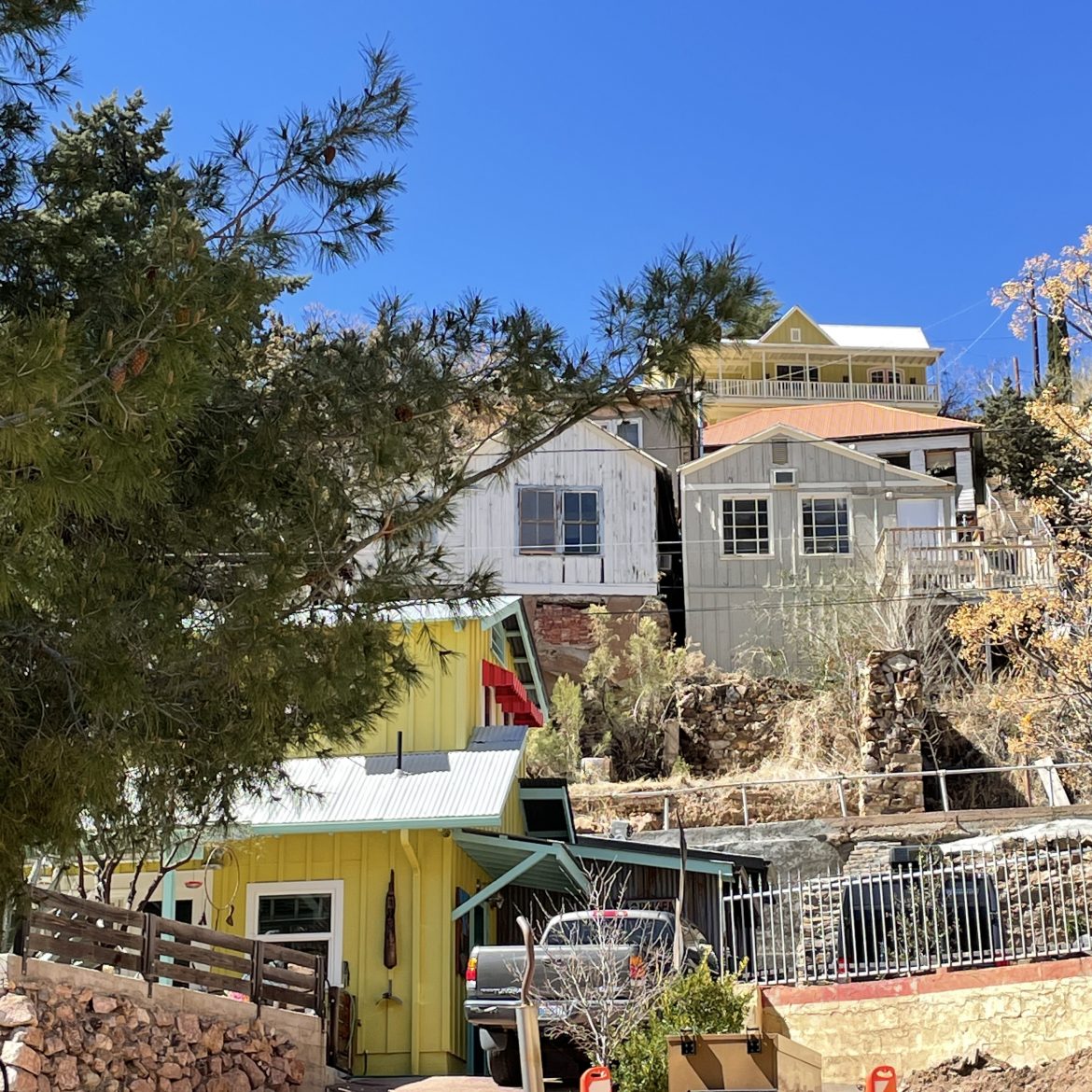
We, and two friends were on an early-morning tour of Bisbee, a town in southeastern Arizona with houses clinging to steep barren hills above the commercial area down in a gulch watered by a clear stream. Formerly filled with miners and chancers, the town is now home to artists and old hotels and B&Bs that play on its history.
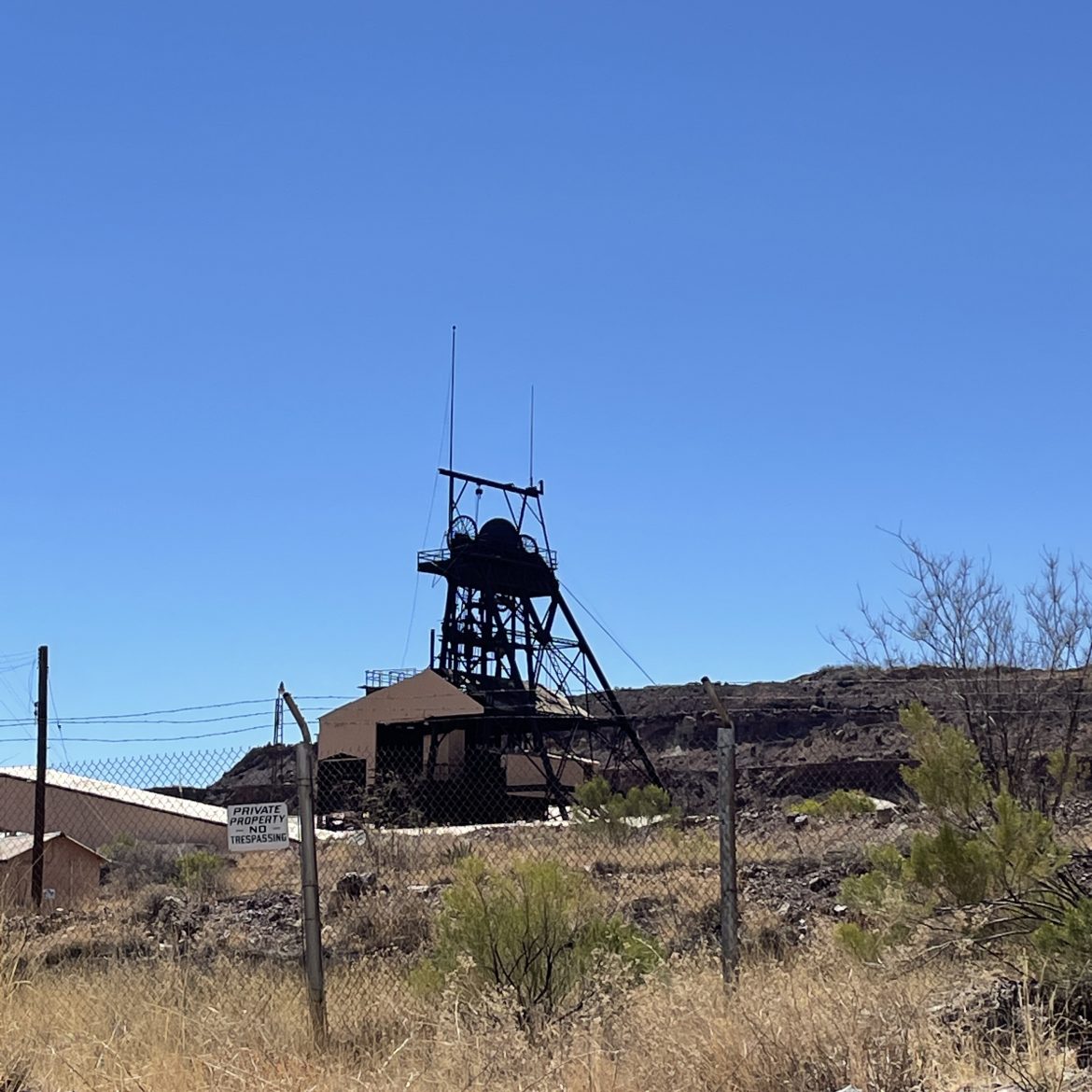
That history is mining. The town was founded in 1880 to support the Copper Queen Mine and in 1917, a gigantic open pit mining operation to meet copper demand from World War I. The pit, called Lavender after a former executive, is an astounding site – 300 acres wide and 900 feet deep. The surrounding area is a maze of hills erected from the tons of waste from the mines. Mining ceased in 1975 after producing 8 billion pounds of copper, 100 million ounces of silver and 2.5 million ounces of gold.
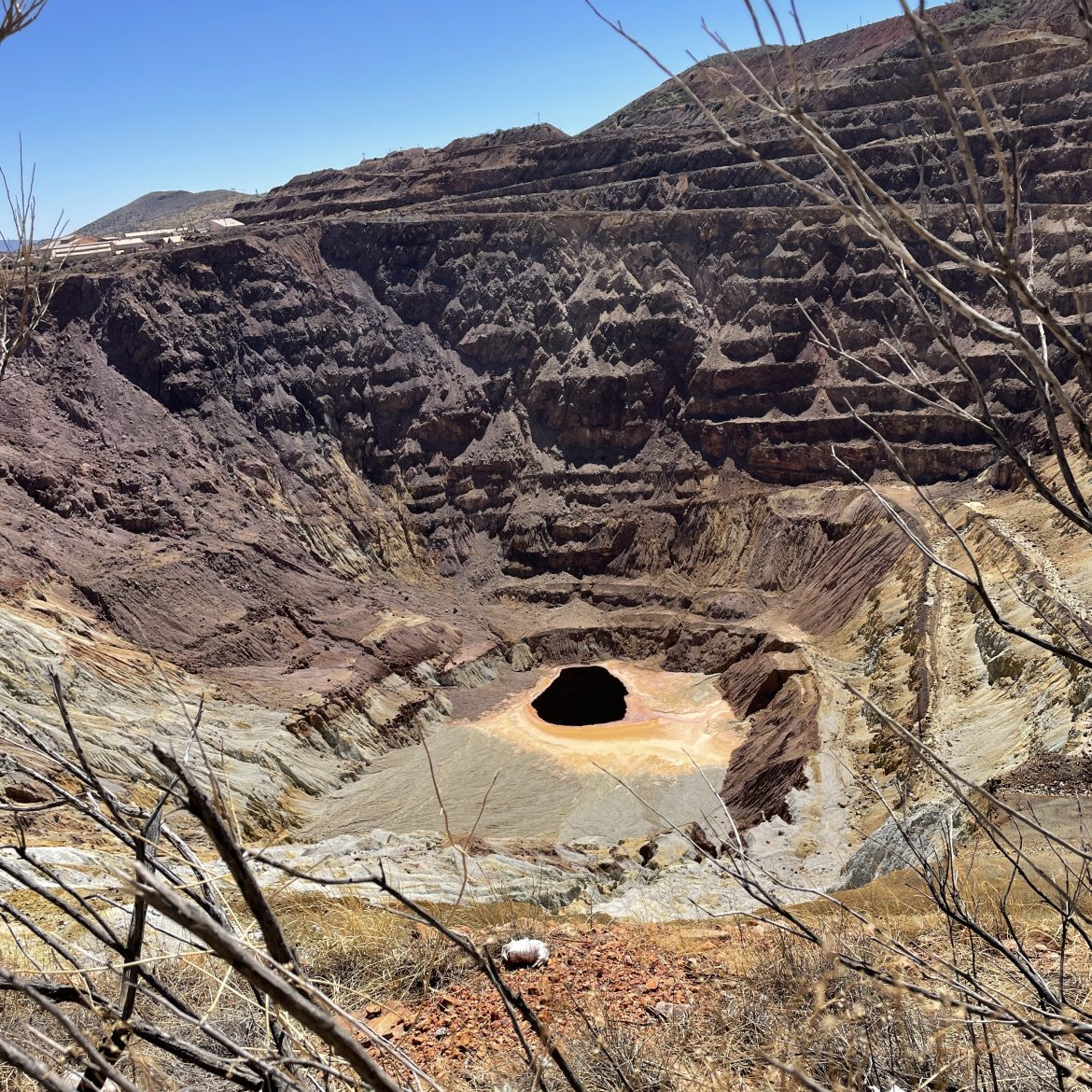
All was not well between owners and workers and in 1917 one of the most infamous events in the battle between labor and management in the United States occurred. Miners attempted to organize to secure better working conditions and pay supported by the famed (infamous to some) IWW international union often called The Wobblies. The owner of the mine at the time, the Phelps Dodge corporation, used private police and deputized sheriffs to kidnap nearly 1200 men.

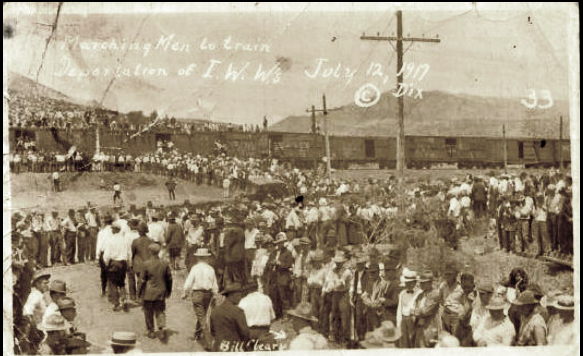
They were marched a couple of miles to a baseball stadium before herding them into cattle cars where they were transported without food and water to be dumped in the New Mexico desert sixteen hours later. The Governor of New Mexico called in the Army to move them to a town twenty miles away to get shelter. No one was ever successfully prosecuted, and the Supreme Court ruled the Constitution didn’t prohibit abductions even crossing state lines! (Wikipedia has an interesting history of this event under the title “Bisbee Deportations”).
According to Guide Dorothy, the descendants of these miners are still embittered. I would be too.
Our golf cart continued trundling up and down the steep hills to look at the small homes perched precariously one above the other, a brightly trimmed Methodist church still in use. It wasn’t hard to picture what went on in the gulch below on payday.
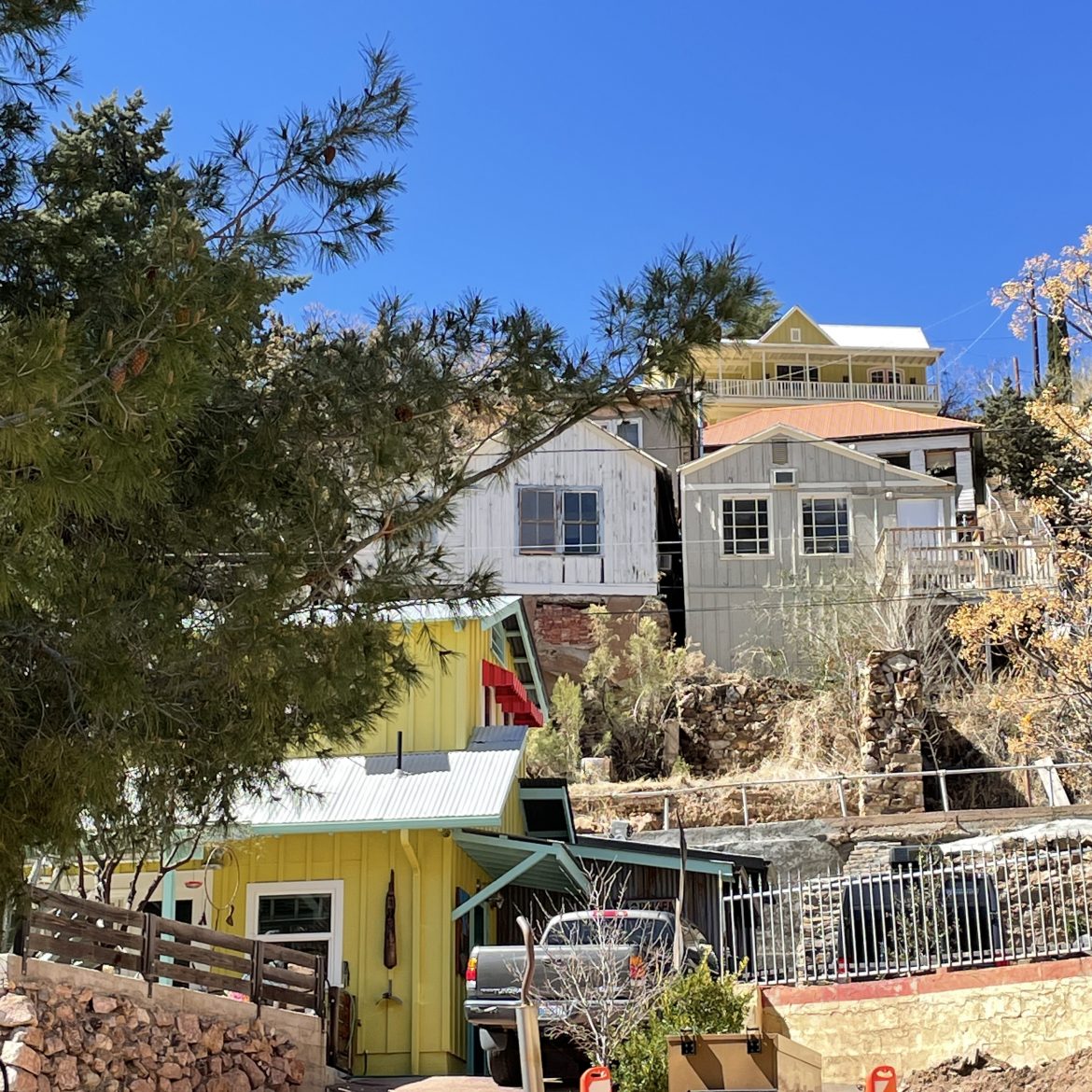
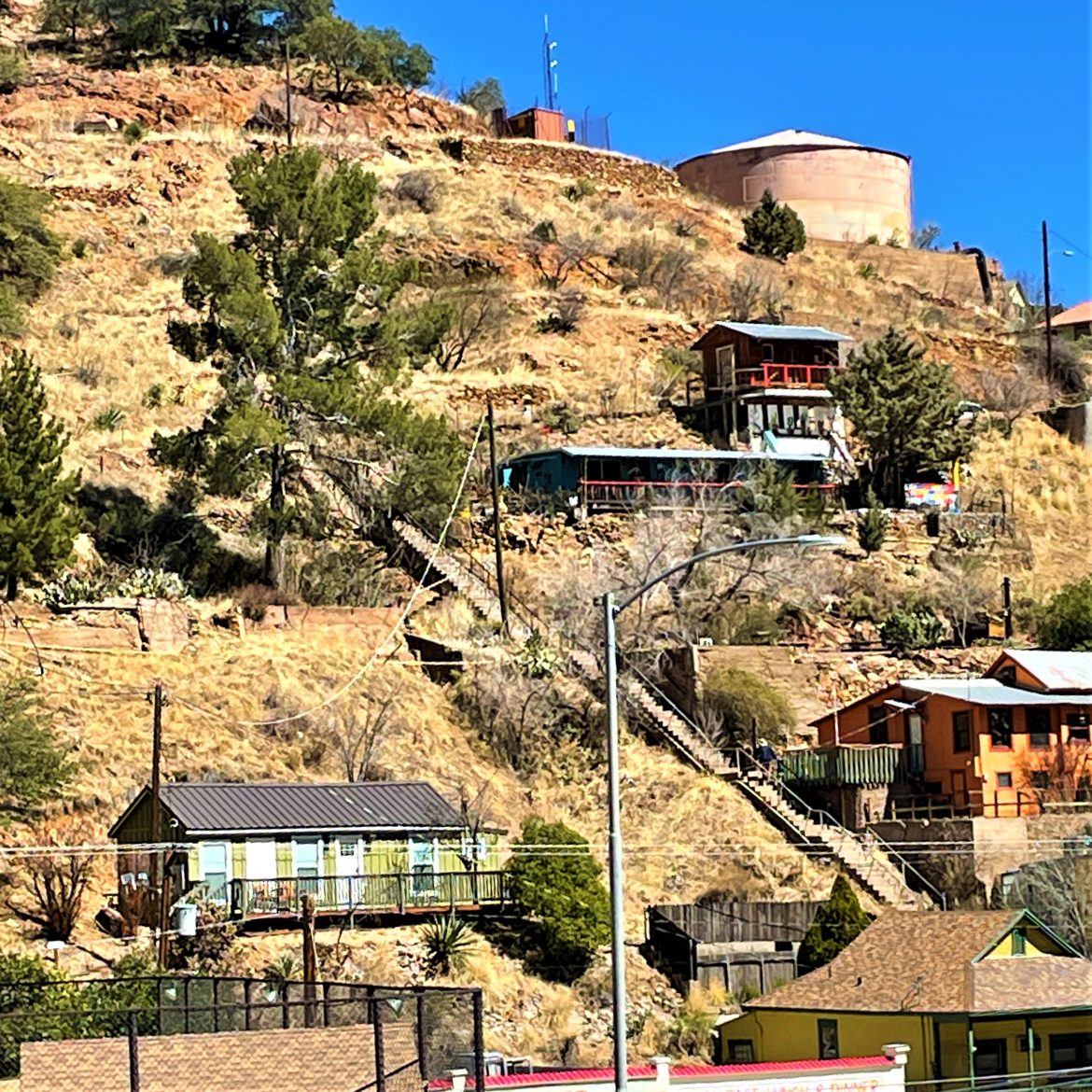
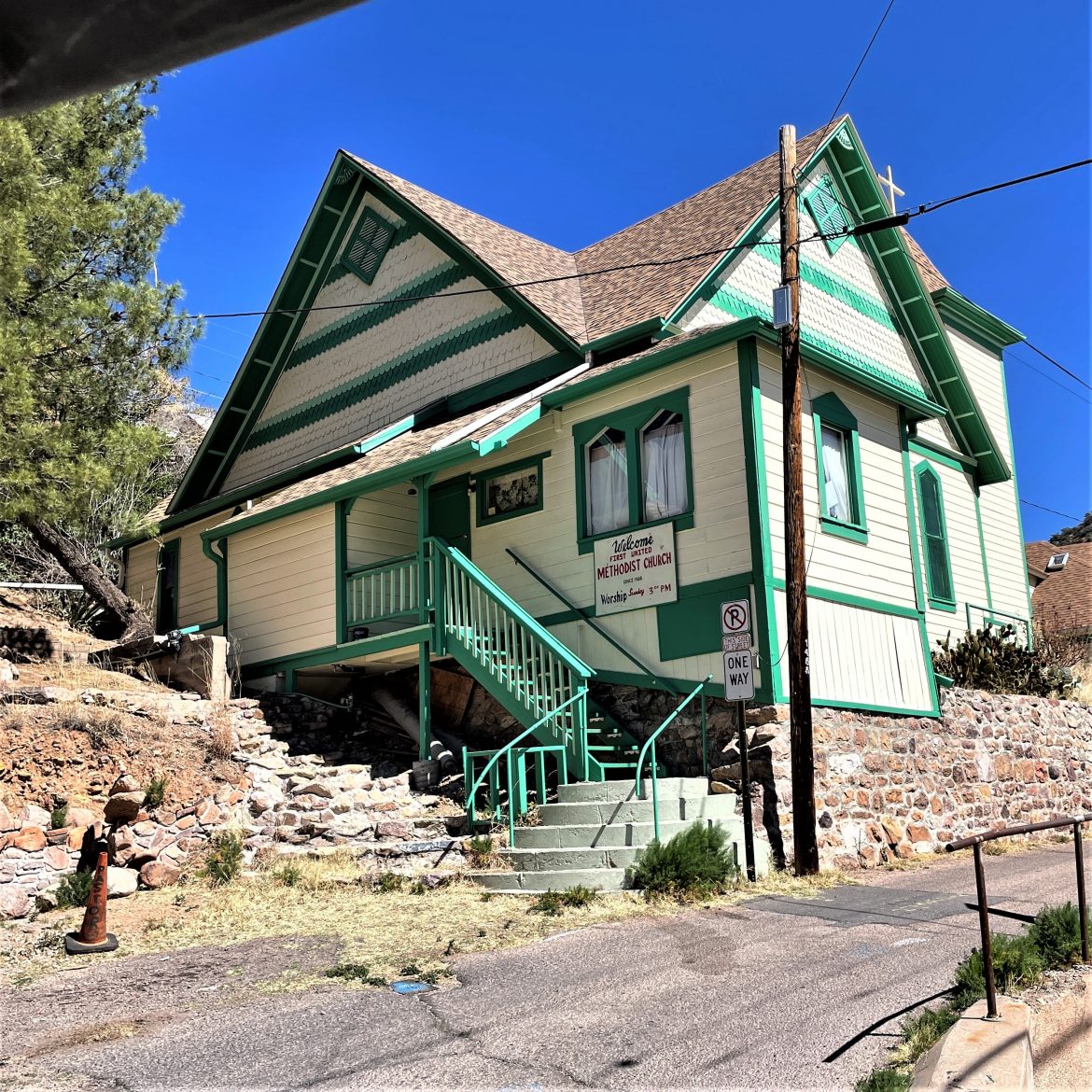
Some of the newer homes featured street-side art work. One especially creative idea was to inset rainbows of colored glass on a retaining wall. The morning sun lit up the rainbow of colors. Another home had angels protecting the entrance.
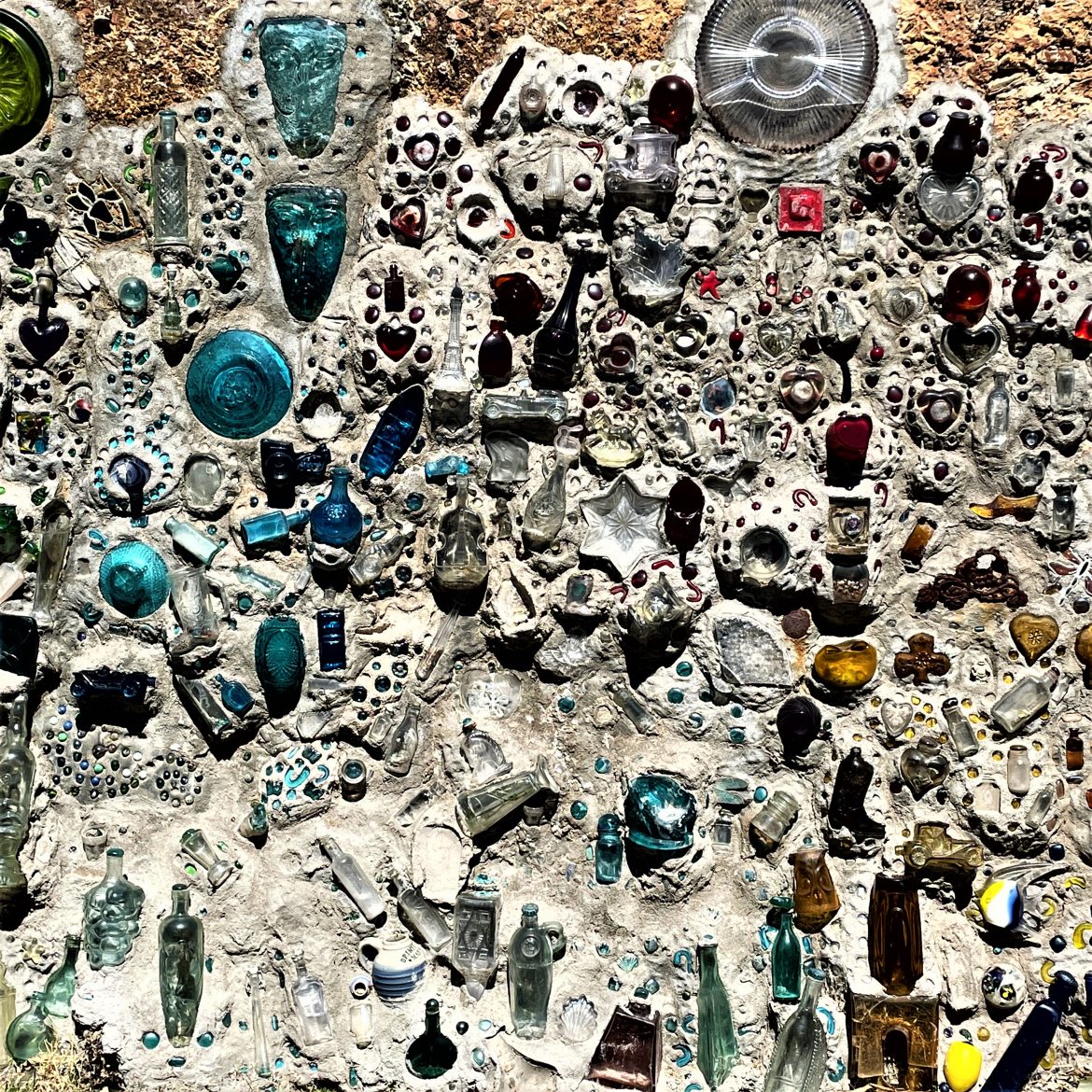
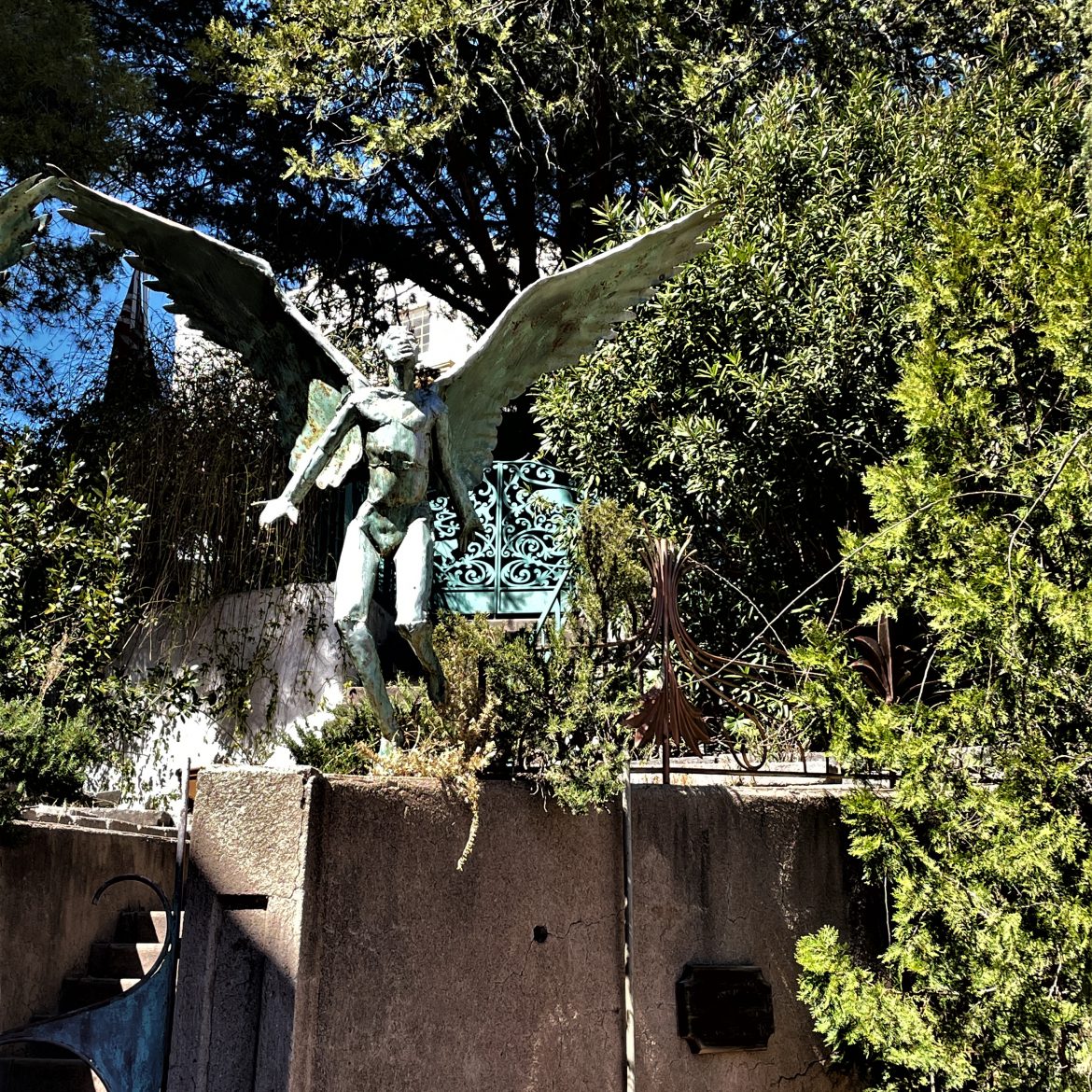
The tour concluded with a view of the 1940-era Art Deco style Cochise County office fronted by an oversize statue of Copper Man (unfortunately sharing the space with a telephone pole).
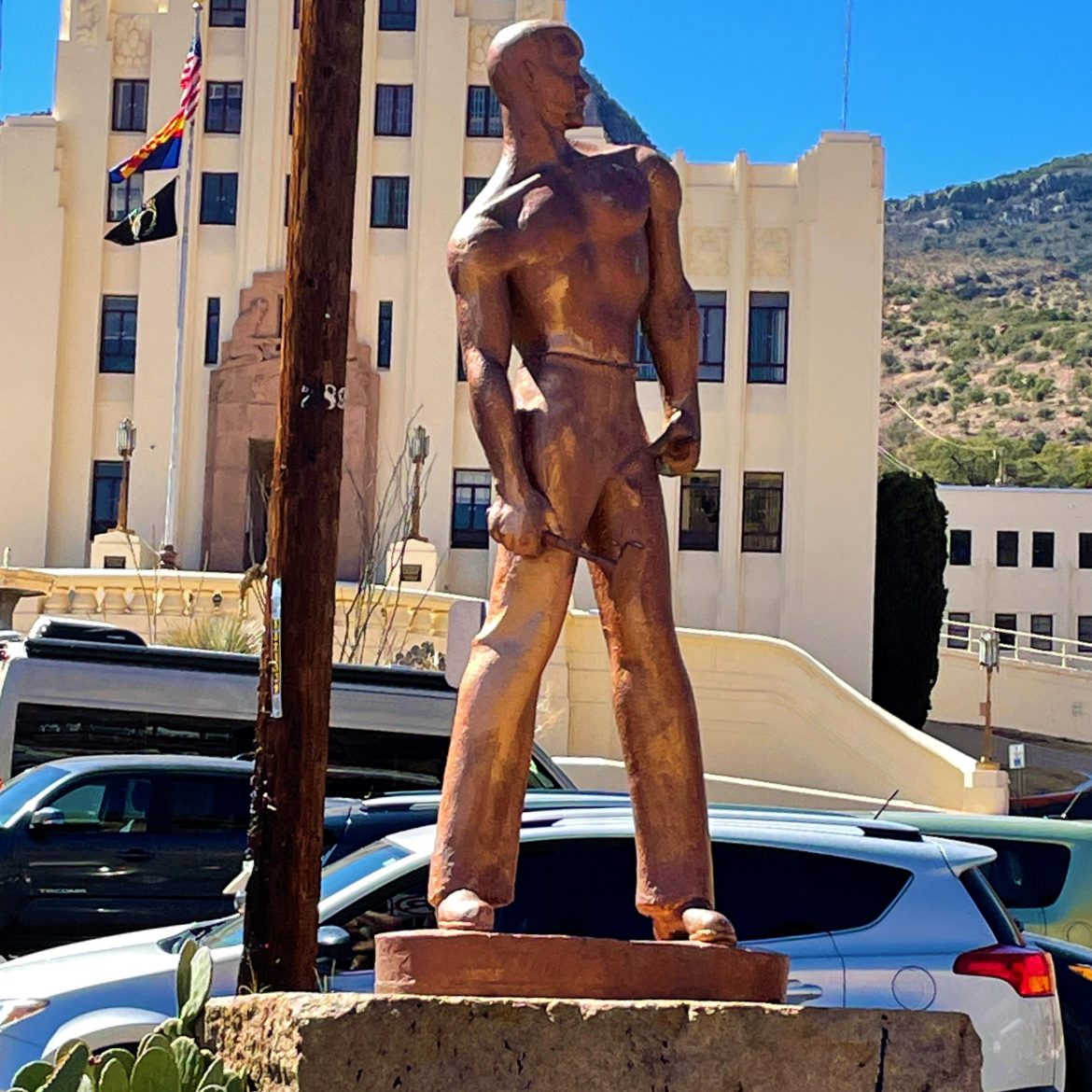
It was nearing lunch time. We drove to a little cluster of buildings called Lowell outside the main town. While we waited for a table at the Bisbee Breakfast Club, we contented ourselves looking around the one-street “commercial district” which was a model of time-travel back to the Nineteen Forties and Fifties. One shop had that vibrating belt women used to take fat off unwanted places along with a barbell and an uncomfortable-looking rowing machine.
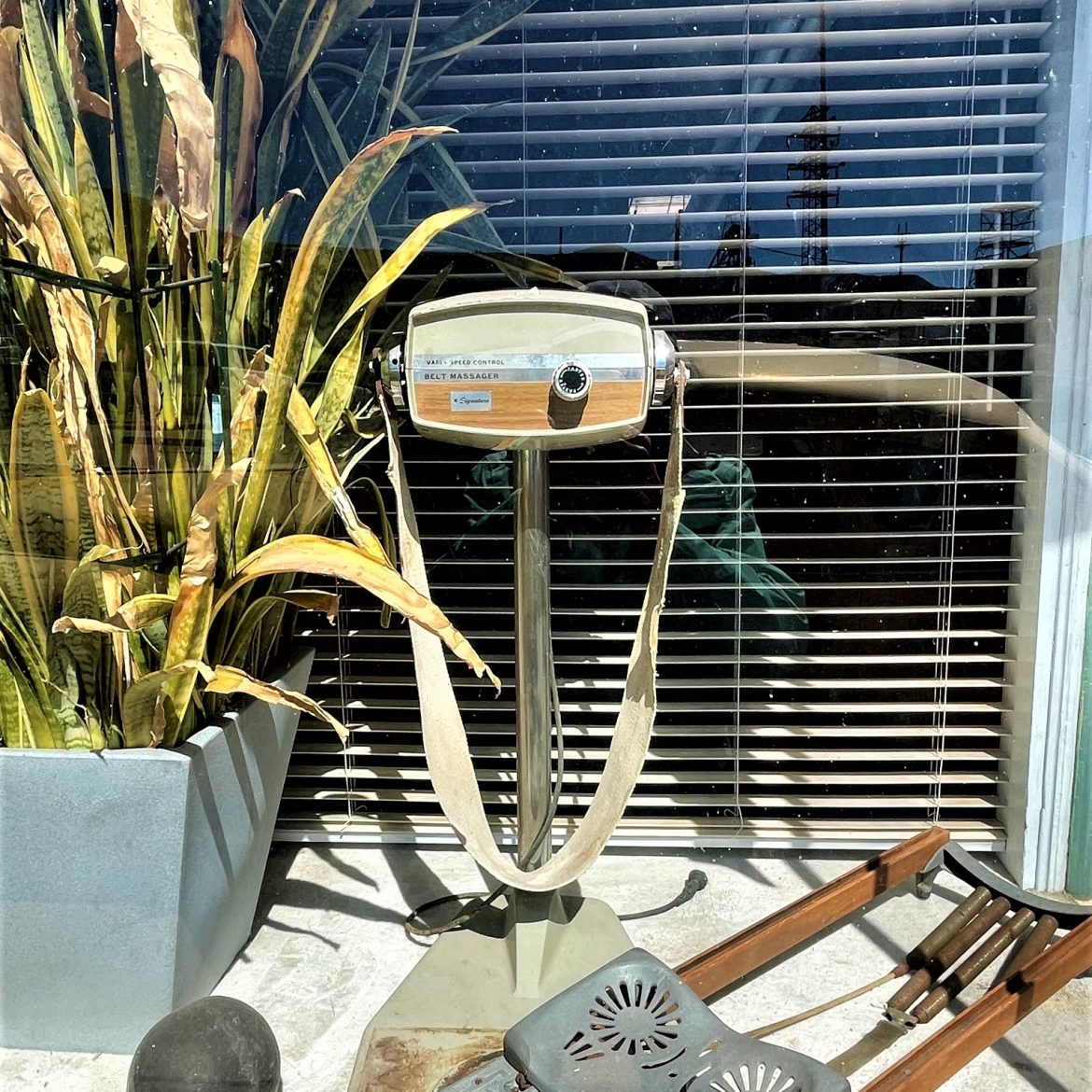
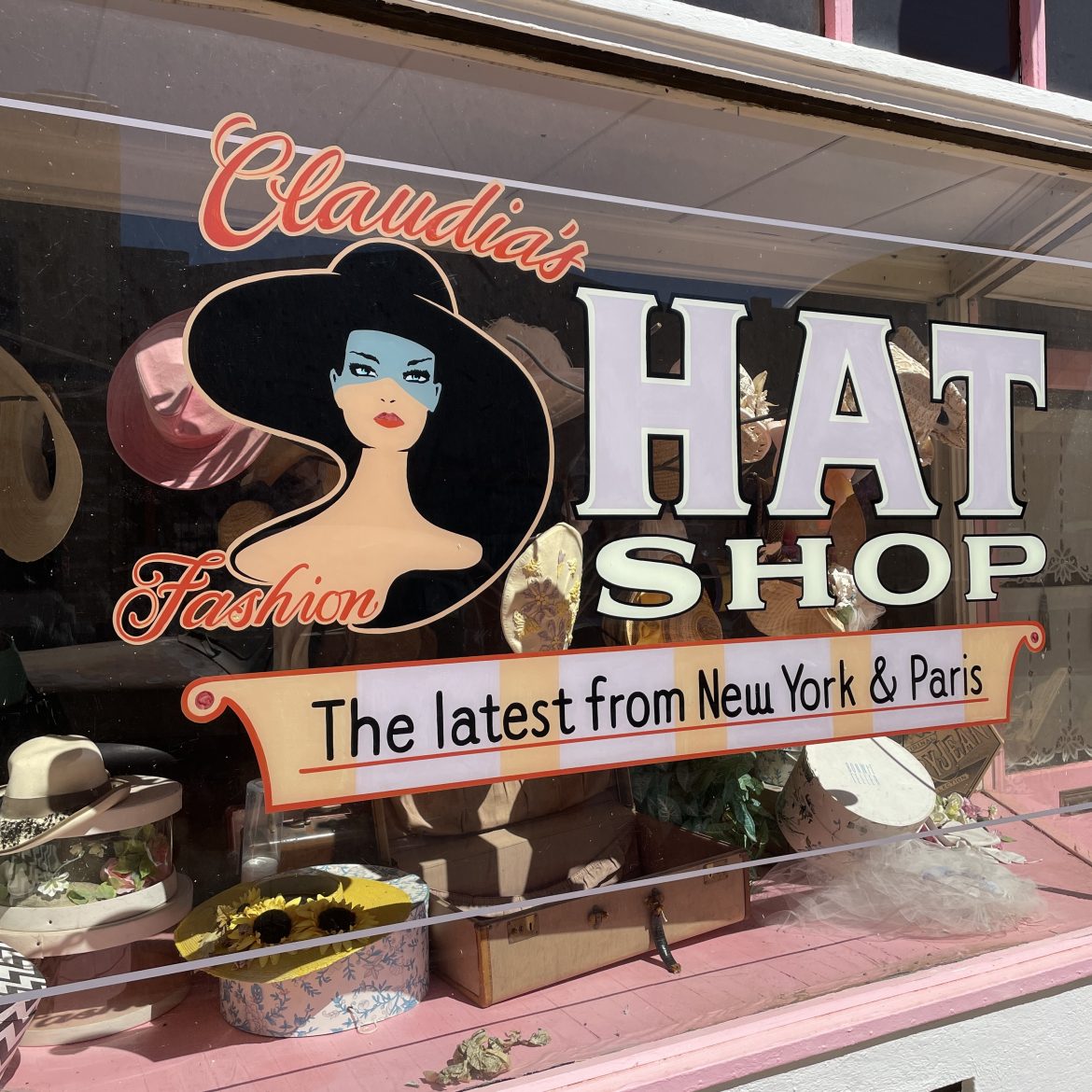
The Huevos Rancheros at the café were delicious but I kept looking out to window to see if any flying saucers were approaching!
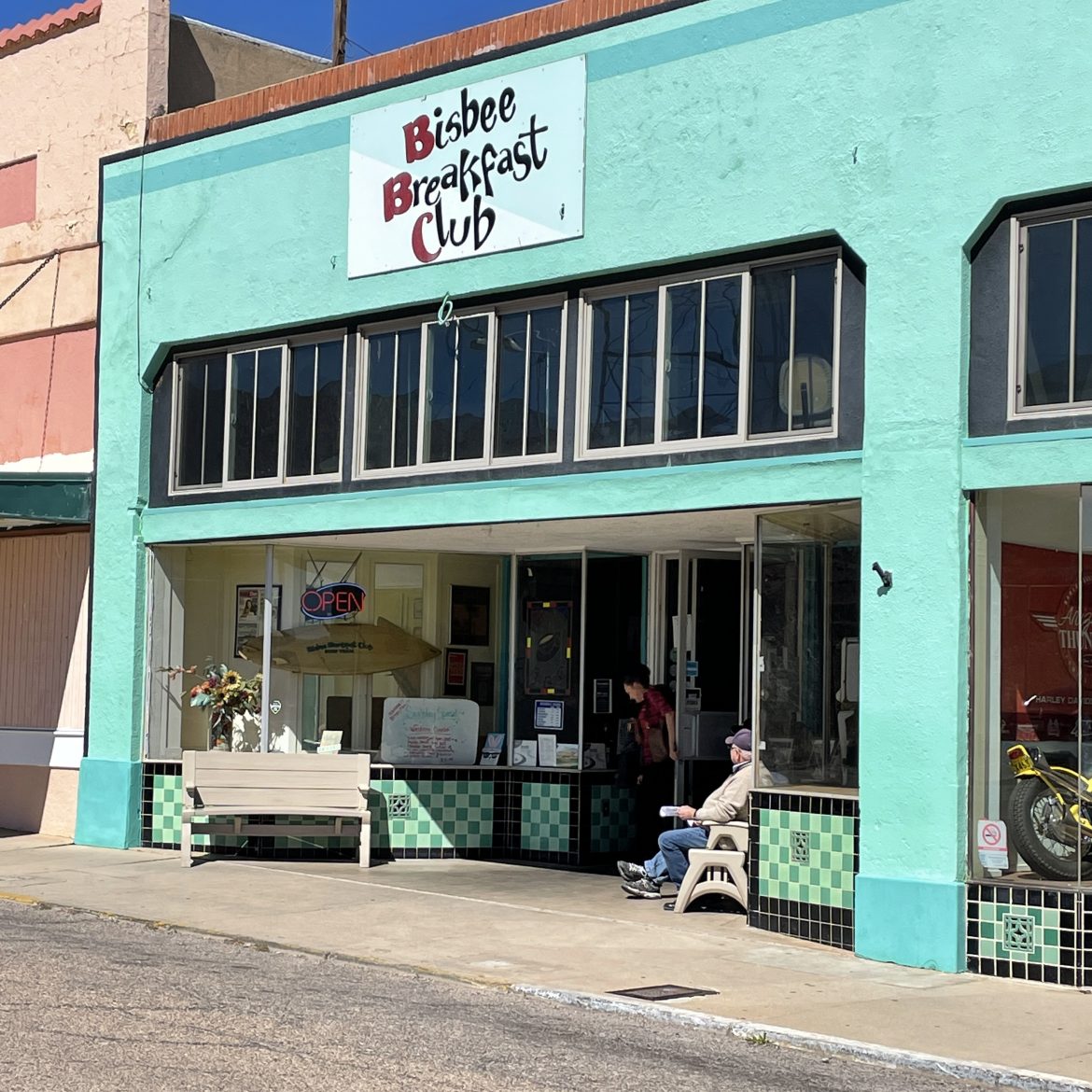
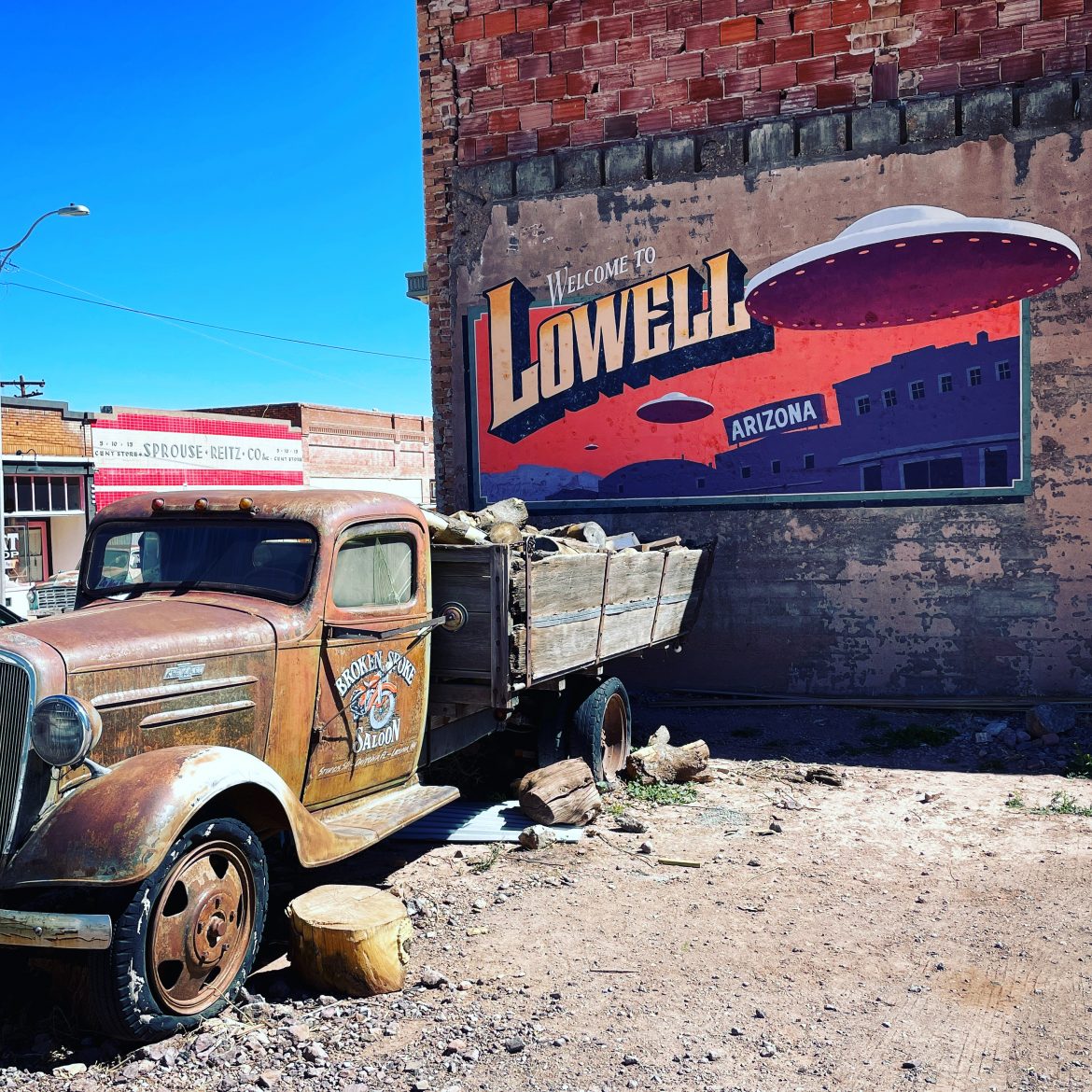
All photos copyright by Judith Works except the historic photos of the deportation which are public domain.


Jane Nesvig
Thank you, Judith, for another interesting armchair tour. You do the legwork; I enjoy the travel from the comfort of my easy chair.
Vivian Murray
The event of 1917 was horrendous! Interesting info on Bisbee. I’ve only heard about the “fun” side of the town. Thanks for the info, Judith!
Behind the Story
OMG! There are so many fascinating historical incidents I’ve never heard of. The Bisbee Deportations is one of them. Wow!
The copper mining history reminds me of the history of Roche Harbor with and its lime deposits, the largest on the West Coast in the late 19th century. It’s fun to explore what’s left of it.
judithworks
I too was shocked about the deportation but aware that was tremendous labor unrest during this time and the Wobblies were very violent also.
I imagine the lime kiln operation was slightly more peaceful although one never knows.